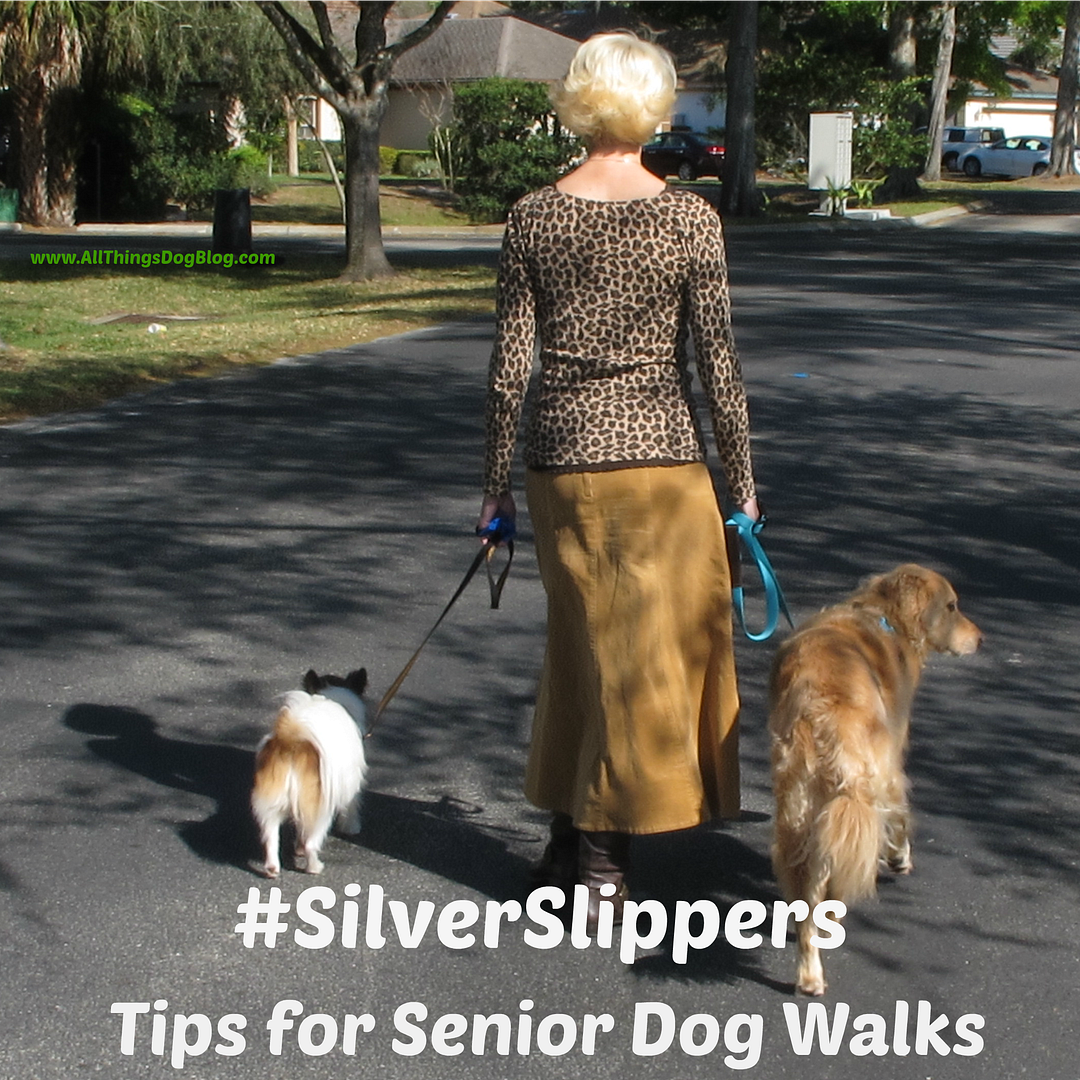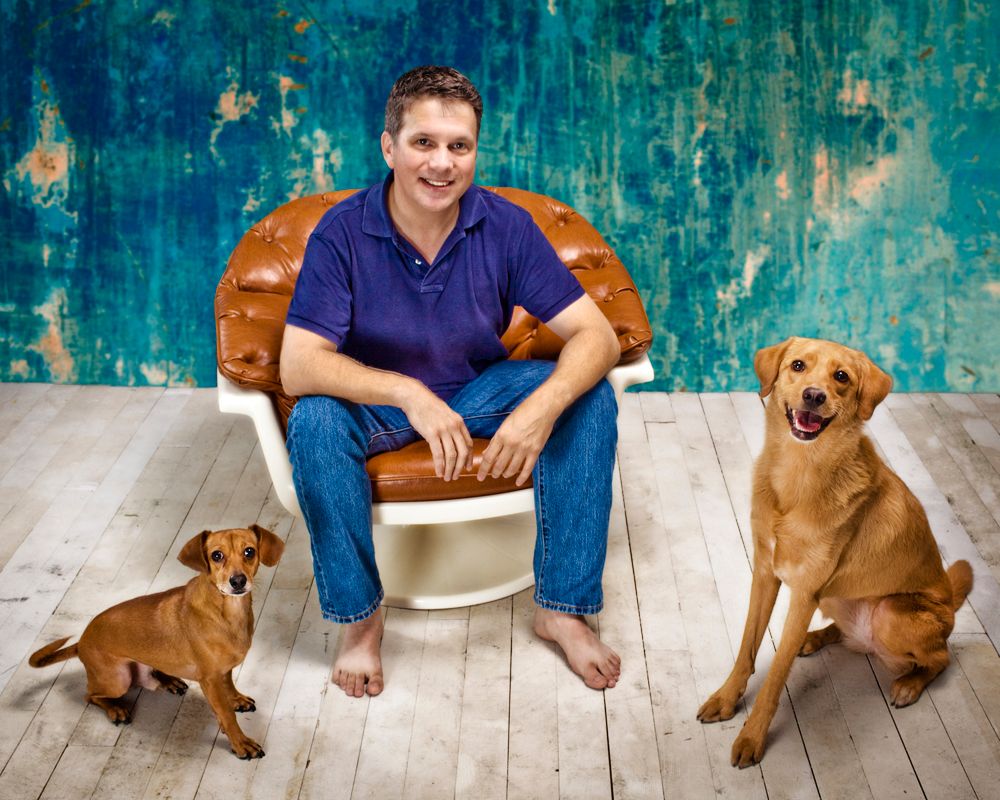of Water in his Backpack
Every time I walk Tanner with his backpack on, I get an assortment of comments, stares, questions or laughs. Clearly, everyone does not watch the Dog Whisperer.So, what exactly is the purpose of a backpack on a dog? The simple answer would be to carry something, but that answer does not even begin to address the underlying reason. That's what this post is all about.
If you own a large or active breed of dog, you already know how challenging it can be to drain his energy. Sometimes even a long walk does not do the trick. This is when you have to get more creative. Adding a job can help to wear out Fido more quickly, while keeping him focused on his task at hand--a mental job, as well.
Adding a mental challenge to your dog's job of walking with you, helps him to concentrate and work harder, both physically and mentally. The end result is a calmer, more relaxed dog at the end of the exercise session.
While there are plenty of other ways to drain excess energy, not the least of which are running, biking, swimming, obstacle courses, and fetch, walking with his leader/pet parent is the most bonding of these activities. Adding an additional job to the walk makes it that much more challenging and bonding for your dog, and you will both benefit.
Backpacks are widely available at most dog supply stores now, so shop around and find one you feel fits your dog well and seems relatively comfortable to him, even as he will appear confused by this new contraption. Be sure to ignore this and keep this "fitting" all business.
Now that Tanner is a seasoned backpacker, here are some tips I can share from what we have learned together:
- Start by walking with the backpack empty, so your dog can adjust to the idea of wearing something more than a collar or harness.
- After proper fitting, tuck in any extra lengths of strapping, leash him up and head out as if nothing is different. The idea is to exude confidence about this walk, just as if it were any other day. Don't make a big fuss. Your dog needs to absorb confident energy from you, so act self-assured and allow him to adjust to his new job without a lot of attention.
- By the end of a long walk, your dog will have gotten used to being a packhorse and will be ready for lesson #2.
- This is when the game gets interesting. Adding weight is what will give your dog a greater physical workout, along with a tougher mental challenge. This combination will assure a calmer pup when the walk is done. Start with something small on each side, perhaps a bag of rice or an ice pack in the summer. He will be asking himself why this new "jacket" is swaying suddenly.
- Tanner took 2-3 walks before he got proficient at swaying with the natural movement of the weights in the backpack. When he finally realized that he could compensate for the swinging of the weight, his whole demeanor changed. He became more relaxed and appeared confident and proud that he was doing a job. Until this occurs, don't add any additional weight.
- Once your dog is walking like a pro, you can add up to 10% of his weight (1/2 on each side) to the backpack, increasing gradually. Judge the amount based on your dog's bone structure and energy level. Just like cub scouts on a hike, dogs will be calmer and more focused on their job when carrying a load that seems to take on its own movement if the dog does not stay in rhythm. Have you ever tried to run with a backpack on? It bounces all over the place, making you very uncomfortable. You'll see him figuring this all out as the mental processes work through this new challenge.
- When you reach your goal, your dog will wait patiently while you "dress" him (that's a great command to teach for leashing, harnessing, etc.) and walk beside you with a more focused and determined attitude. His view of you as the pack leader/pet parent will be changing as you walk. This is a very good thing.
- Now Tanner carries our cold water bottles when he wears the backpack. Water bottles do sway quite noticeably, but Tanner has adjusted to their movement by limiting his own upper body movement. He stays focused and steady as he follows my lead.
 Tanner Concentrates on His Walks
Tanner Concentrates on His Walks
Better with a Backpack to Carry
Having any problems with this? I'll field questions if you'd like to write to me. You can reach me at LetsAdoptaDogPark@gmail.com. Happy hiking!
If you're in search of a backpack for your dog, check out this and Amazon's other offerings for an assortment of various styles. Consider whether you might want to have Fido carry a picnic lunch or other delicate package when you select the style. Most have soft pouches, but some do feature shaped saddlebags for carrying more delicate items. Good luck!
Monday I'm still on dog exercise activities. Besides swimming, my favorite way to exercise the dogs in the summer is biking, and I'll be sharing my tips on this fun and fit activity--for both of you. Hope to see you then.





































5 comments:
SlimDoggy said...
Great tips on working with a back pack. Jack wears one often and I can attest to their benefit for draining energy. He also uses his FitVest which is great when I just want to add some resistance and not necessarily need him to carry something. Thanks for joining the Hop.
GizmoGeodog said...
Great explanation on getting your dog used to the pack...I wish Gizmo could carry all our water, but at only 20# he's limited...but he does do his part and carries two of the folding water pouches which is usually enough for him
Kari Neumeyer said...
People laughed when I told them I have an Outward Hound backpack. No, really, that's what it's called!
To Dog With Love said...
Thanks for joining our FitDog Friday hop! Great tips. I've often wished Rocco could carry his own stuff, but I think he's a little too short! ha! I've also heard a lot of good things about the FitVest that SlimDoggy mentions above.
Diane and Rocco
BoingyDog said...
So great! It's been awhile since I've put Kayo's backpack on but maybe it's about that time! We'll see if I remember tomorrow during our hike! Great post and very good tips!
Post a Comment